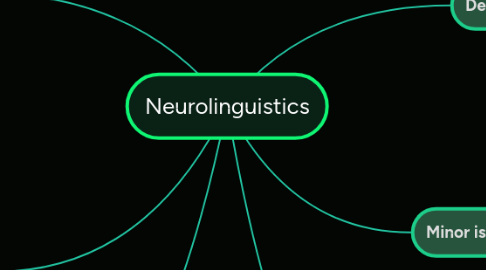Neurolinguistics
by Marian Reque


1. Views about the relationship between brain and language
1.1. Localism tries to find locations or centers in the brain for different language functions.
1.2. Associationism situates language functions in the connections between different areas of the brain.
1.3. Dynamic localization of function assumes that functional systems of localized subfunctions perform language functions.
1.4. Holistic theories consider many language functions to be handled by widespread areas of the brain working together.
1.5. Evolution-based theories stress the relationship between how the brain and language evolved over time in different species.
2. Brain activity during language tasks can be measured through
2.1. computer tomography (CT) scans
2.2. magnetic resonance imaging (MRI)
2.3. positron emission tomography (PET) scans
3. Language areas in the brain
3.1. Broca’s area: crucially involved in the production of speech.
3.2. Wernicke’s area: crucially involved in the understanding of speech.
3.3. motor cortex: controls the articulatory muscles of the face, jaw, tongue and larynx.
3.4. arcuate fasciculus: form a crucial connection between Wernicke’s and Broca’s areas.
4. Minor issues with oral language production
4.1. Tip of the tongue phenomenon: speakers generally know a word or name but cannot bring it to mind and produce it due to it being uncommon to them.
4.2. Slip of the tongue: a sound is carried over to the next word, or two words "change place" in an utterance.
5. Description of the term
5.1. Dating back to the nineteenth century, it studies the relation of language and communication to different aspects of brain function
5.1.1. Its interdisciplinary nature mainly includes the fields of neurology, philosophy, psychology, psychiatry and speech pathology.
